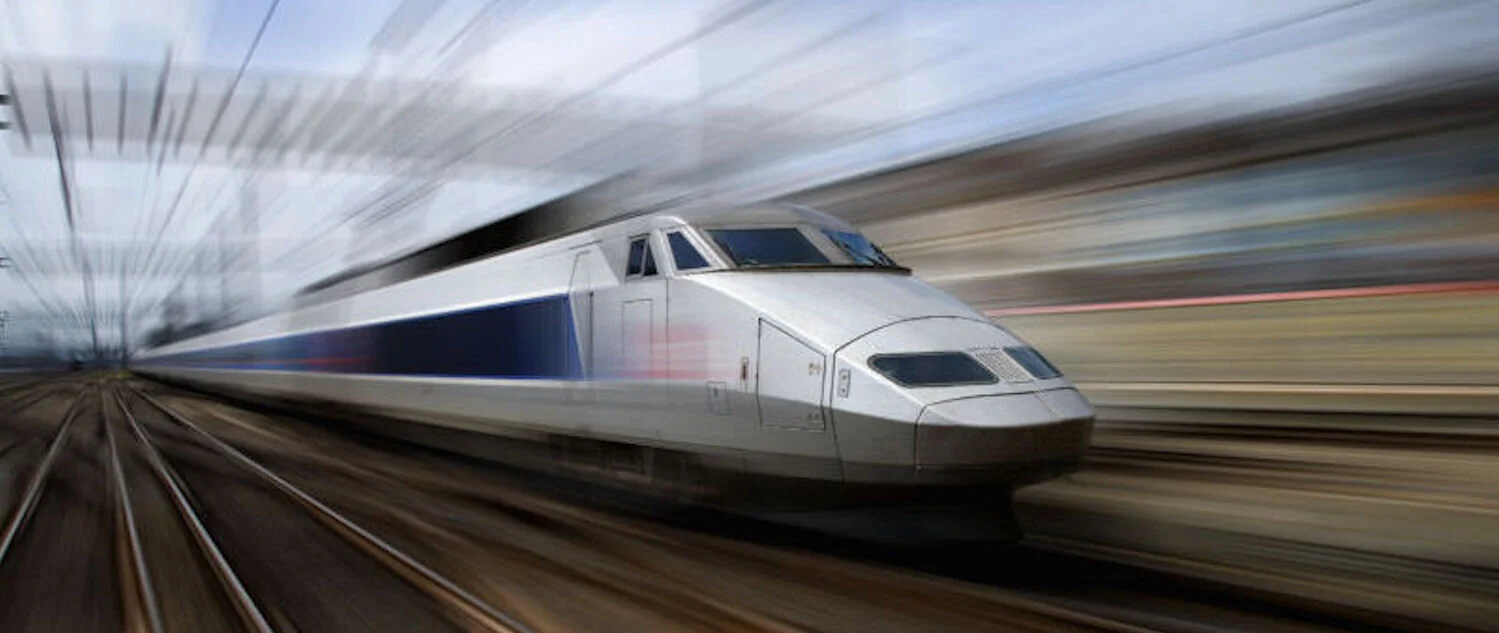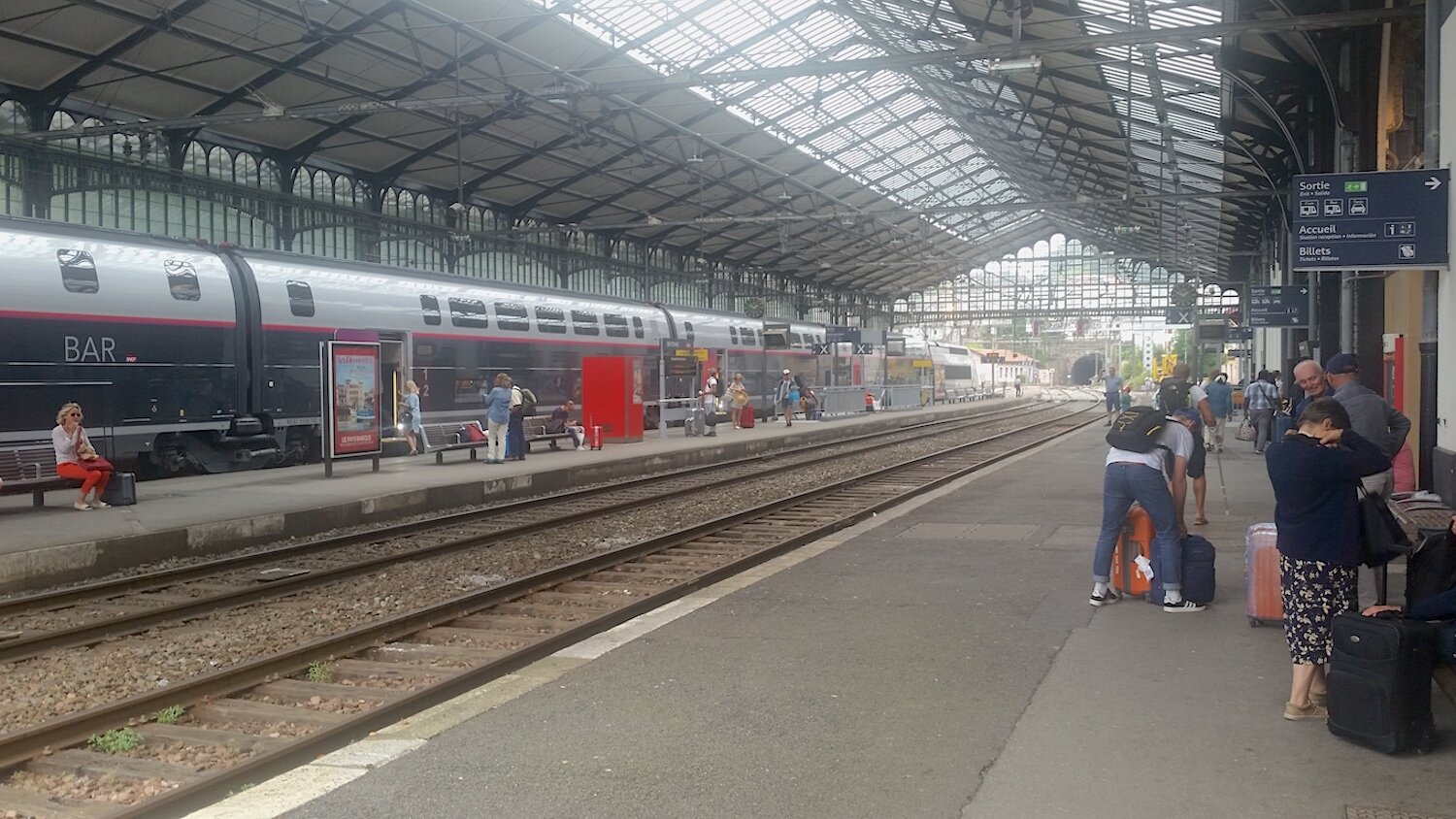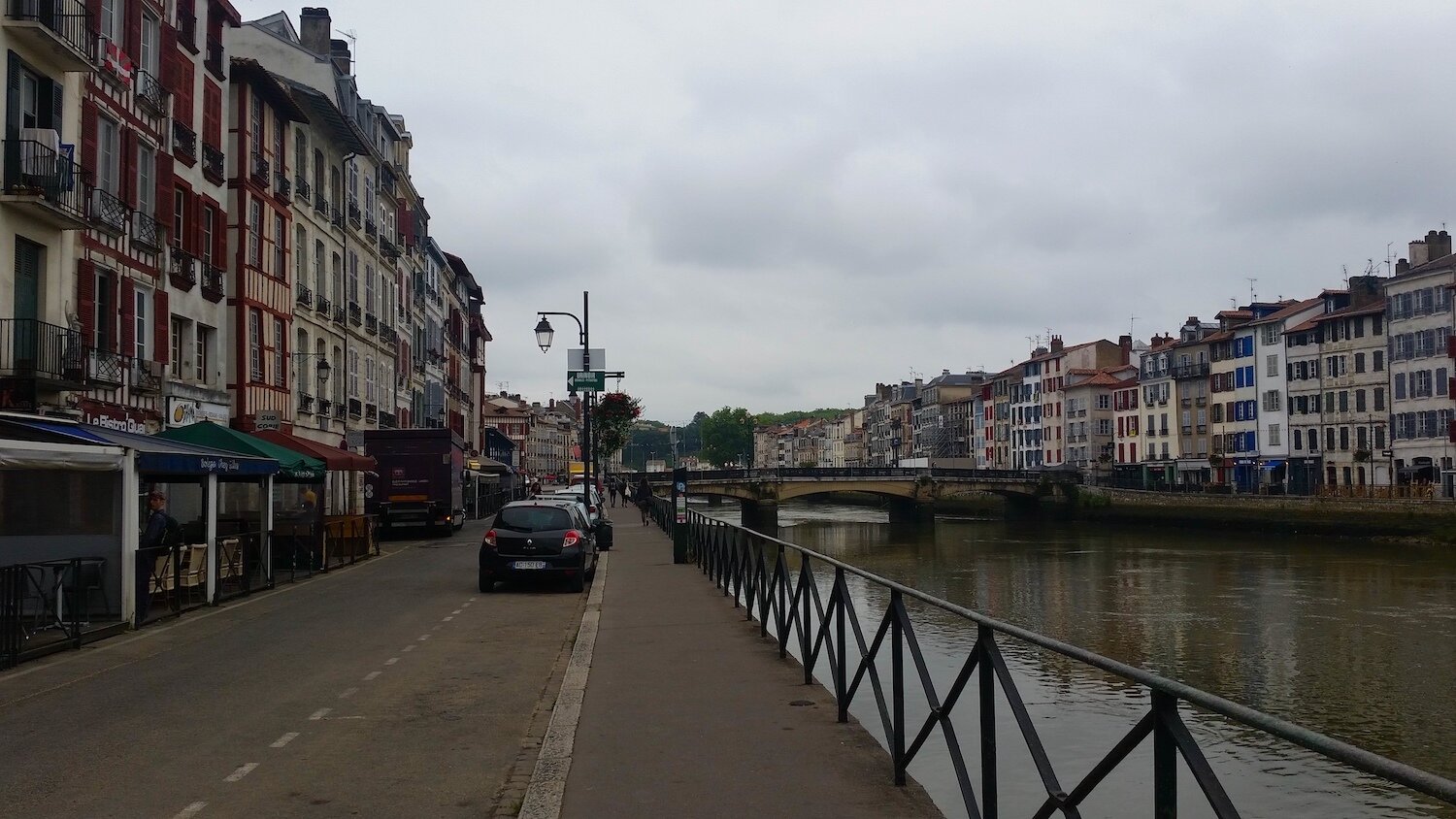The bullet-train glided to a stop at the station. The phrase, Gare de Bayonne, drifted by our window.
Bob and I pulled on our packs and stepped to the asphalt below. We were too giddy to realize the scope of the trade. By means of that step we exchanged a futuristic mode of transport for the most primal form of all: our own feet. Little did we know that a month of time (and more physical and emotional energy than we could have imagined) would be required to cover the same distance that our bullet-train had consumed in just three hours and 52 minutes. We had come from Paris to southwest France to slow down and walk the Camino de Santiago, the pilgrim path, the Way of St James.
The Gare de Bayonne marked the transition between flight and feet.
Outside the station, we entered the beauty of Basque Country. Bayonne exudes old-world charm with its narrow streets, half-timbered houses, and colorful shutters. Along with its sister-city, Biarritz, it is an urban anomaly in this rustic corner of France.
The city of Bayonne is located at the confluence of the Nive and Adour Rivers. The Pyrénées mountain range, carrying the French-Spanish border, set the backdrop. The Bay of Biscay, a lobe of the Atlantic Ocean, fronts the scene. Our walk began in St-Jean-Pied-de-Port, France. Image modified from Google Earth.
Bayonne’s cultural heritage has deep roots. The Roman army pushed through here in the decades before Christ and “romanized” the salty tribes of the region (See De Bello Gallico 3.27.1). By the fourth century, the site at the confluence of rivers was fortified and may have carried the name Lapurdum.* Later, in the 10th century, it took the name Baiona, Basque for “good river.”** That one stuck. Interestingly, this nomen is already known by many of our readers. In this bucolic setting soldiers first mounted (or produced) stabbing knives for the muzzle of their firearms. The baionnette—or bayonet—was born in Bayonne.
Our experience of the place was less violent, although when presented with the facture d'hôtel at the desk, we did bleed a little.
One is never far from a riverfront in Bayonne. All these waterways meet and flow into the nearby Bay of Biscay.
Armed with a good night’s sleep, we set off to visit Bayonne’s primary landmark, the Cathédrale Sainte-Marie de Bayonne. With spires reaching more than 85 meters into the sky, it was easy enough to find in the historic district.
The spires of the Cathédrale Sainte-Marie de Bayonne rise above the river and the surrounding buildings.
The Roman Catholic church we see today is only the most recent embodiment of work on the site. Started in the 13th century, the Gothic-style structure replaced an earlier Romanesque one destroyed by lightning! Construction of this new building was slow, stone by stone, gallery by gallery. All but the steeples were completed by the 17th century; the final heights were added in the 19th century.
Standing in their shadow calls for the eloquence of Victor Hugo. On the occasion of his visit in 1843 he wrote these words: "The cathedral of Bayonne is rather a fine church of the fourteenth century, mushroom-colored and gnawed all over by the sea wind. Nowhere have I seen richer and more capricious fenestration than that traced by the framework within the pointed arches. In it there is all the strength of the fourteenth century mingled with all the fantasy of the fifteenth, but without chilling it.”***
The cloister (or enclosed church yard) is one of the largest in all of France. Lingering below are the relics of Saint Leo, a 9th century bishop and missionary to the Basque peoples.
Bob and I went inside. Instinctively our faces turned up . . . and up . . . and up. A cascade of light tumbled from narrow stained glass above and spilled into the darkened corners below. It was spacial artistry of wondrous order. Squinting, we made out the figures of saints and sinners, leopards and birds, dancing overhead. The Red Sea is crossed. The Christ is raised. Our memories are teased as the Divine presence is invoked: “May your eyes be open day and night on this house.”
The Cathédrale Sainte-Marie de Bayonnean is a transitional experience and primer to the mysterious world of medieval architecture. Bob and I had much to learn.
¡Buen Camino!
View to the choir.
Plan of the cathedral. This drawing, dated 1898, may be found in the Archives rationales France. See here (accessed 8/2/2021).
*Lapurdum is noted at the beginning of the 5th century AD in the Notita Dignitatum (occ. 42.18f). See the description of the site in Perseus here (accessed 8/1/2021).
**Read more about “The History of Bayonne” here (accessed 8/1/2021).
***I draw these words from Hugo’s Alpes et Pyrénées as translated into English by John Mason (1898:127). A digital version of the work may be found here (accessed 8/2/2021).
Join Mark and Vicki for a Mediterranean experience May 25-June 5, 2022. We'll be cruising aboard the luxurious Celebrity Infinity. See the link here for details. Onboard lectures will provide focus for the group as we visit the ports of Olympia, Santorini, Ephesus, and Athens among others. Optional add-on visits to Venice or Rome are possible on either end of the trip. Contact me at markziese@gmail.com.








